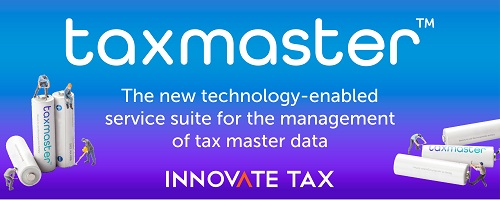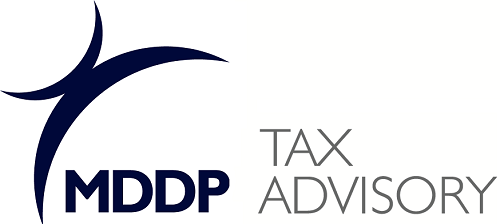On March 24, 2022, the ECJ issued its decision in the case C-697/20 (Dyrektor Izby Skarbowej w L.).
Context: Reference for a preliminary ruling — Taxation — Value added tax (VAT) — Directive 2006/112/EC — Article 9 — Taxable person — Articles 295 and 296 — Flat-rate scheme for agricultural producers — Spouses carrying out an agricultural activity using goods forming part of the marital community – Possibility for these spouses to be considered as separate taxable persons for VAT – Choice of one of the spouses to renounce the status of flat-rate farmer and place his activity under the normal VAT regime – Loss for the other spouse of the status of flat-rate farmer”
Subject matter of the case in the main proceedings:
Exclusion of the option to treat as separate VAT taxable persons spouses who engage in agricultural activity within an agricultural holding using their marital
joint property; the status of flat-rate farmers and of farmers taxed in accordance with general rules.
Articles in the EU VAT Directive 2006/112/EC
Articles 9, 295 and 296 of the EU VAT Directive 2006/112/EC
Article 9 (Taxable person)
1. “Taxable person” shall mean any person who, independently, carries out in any place any economic activity, whatever the purpose or results of that activity.
Any activity of producers, traders or persons supplying services, including mining and agricultural activities and activities of the professions, shall be regarded as “economic activity”. The exploitation of tangible or intangible property for the purposes of obtaining income therefrom on a continuing basis shall in particular be regarded as an economic activity.
2. In addition to the persons referred to in paragraph 1, any person who, on an occasional basis, supplies a new means of transport, which is dispatched or transported to the customer by the vendor or the customer, or on behalf of the vendor or the customer, to a destination outside the territory of a Member State but within the territory of the Community, shall be regarded as a taxable person.
Article 295 (Common Flat-Rate Scheme for Farmers)
1. For the purposes of this Chapter, the following definitions shall apply:
(1) “farmer” means any taxable person whose activity is carried out in an agricultural, forestry or fisheries undertaking;
(2) “agricultural, forestry or fisheries undertaking” means an undertaking regarded as such by each Member State within the framework of the production activities listed in Annex VII;
(3) “flat-rate farmer” means any farmer covered by the flat-rate scheme provided for in this Chapter;
(4) “agricultural products” means goods produced by an agricultural, forestry or fisheries undertaking in each Member State as a result of the activities listed in Annex VII;
(5) “agricultural services” means services, and in particular those listed in Annex VIII, supplied by a farmer using his labour force or the equipment normally employed in the agricultural, forestry or fisheries undertaking operated by him and normally playing a part in agricultural production;
(6) “input VAT charged” means the amount of the total VAT attaching to the goods and services purchased by all agricultural, forestry and fisheries undertakings of each Member State subject to the flat-rate scheme where such tax would be deductible in accordance with Articles 167, 168 and 169 and Articles 173 to 177 by a farmer subject to the normal VAT arrangements;
(7) “flat-rate compensation percentages” means the percentages fixed by Member States in accordance with Articles 297, 298 and 299 and applied by them in the cases specified in Article 300 in order to enable flat-rate farmers to offset at a fixed rate the input VAT charged;
(8) “flat-rate compensation” means the amount arrived at by applying the flat-rate compensation percentage to the turnover of the flat-rate farmer in the cases
specified in Article 300.
2. Where a farmer processes, using means normally employed in an agricultural, forestry or fisheries undertaking, products deriving essentially from his agricultural production, such processing activities shall be treated as agricultural production activities, as listed in Annex VII.
Article 296 (Common Flat-Rate Scheme for Farmers)
1. Where the application to farmers of the normal VAT arrangements, or the special scheme provided for in Chapter 1, is likely to give rise to difficulties, Member States may apply to farmers, in accordance with this Chapter, a flat-rate scheme designed to offset the VAT charged on purchases of goods and services made by the flat-rate farmers.
2. Each Member State may exclude from the flat-rate scheme certain categories of farmers, as well as farmers for whom application of the normal VAT arrangements, or of the simplified procedures provided for in Article 281, is not likely to give rise to administrative difficulties.
3. Every flat-rate farmer may opt, subject to the rules and conditions to be laid down by each Member State, for application of the normal VAT arrangements or, as the case may be, the simplified procedures provided for in Article 281.
Facts
- In 2011, the appellant in the main proceedings (‘the appellant’) was engaged in a special sector of agricultural production, rearing chickens for slaughter with the use of two out of the six sheds purchased together with her husband who was engaged in a special sector of agricultural production within the same scope using the remaining four sheds. On 31 December 2010, the appellant submitted a VAT registration application, opting out of the tax exemption as of 1 January 2011 and opting for a monthly tax period, while her husband continued to benefit from the exemption as a flat-rate farmer.
- The appellant submitted corrections to her VAT-7 returns for the period from January to December 2011, which were deemed correct by the first-tier authority because they accounted for the income and expenses of the entire agricultural holding.
- On 29 August 2016, the appellant submitted further corrections to her VAT returns for the months from January to December 2011, together with a VAT
overpayment claim for the tax periods of February, April, June, August, October and November 2011. - By decision of 26 October 2016, the first-tier tax authority held that the corrections to the VAT returns previously submitted by the appellant for the
months from January to December 2011 were correct, but refused to recognise the VAT overpayments claimed by the appellant for the individual months of 2011. - After reviewing the appellant’s appeal, the second-tier authority found that the liabilities relating to the January-November 2011 tax periods were time-barred but held that the authority’s right to verify the overpayment was not time-barred. Therefore, by decision of 28 February 2017, the second-tier authority set aside the decision of the first-tier authority of 26 October 2016 with respect to determining the amount of excess input tax over output tax to be deducted in the subsequent tax periods (January, March, May, July, September and December 2011) and the amount of VAT liability (February, April, June, August, October and November 2011) and discontinued the proceedings in this regard, while with respect to the rest of the case – the refusal to recognise overpayments for the individual months of 2011 – it upheld the decision of the first-tier authority.
- In the view of the second-tier authority, it is undisputed that on the land which is the statutory joint property of the spouses, there are six buildings (sheds) in which both spouses engaged in a special sector of agricultural production consisting in the rearing of chickens for slaughter (in two of the sheds this activity was carried out independently by the appellant, and in the remaining four sheds it was carried out by her husband).
- The second-tier authority stated that the appellant had submitted an application for registration and was, by virtue of her agricultural activity, an active VAT taxable person who was taxed in accordance with general rules. Therefore, it was she who had the status of a VAT taxable person by virtue of engaging in agricultural activity in the agricultural holding which was the spouses’ joint property. Consequently, the authority took the view that the submission by the appellant of the application for registration referred to in Article 96(1) of the Law on VAT also had an effect with regard to the appellant’s husband, who thereby lost his status as a flat-rate farmer.
- After the appellant had brought an action before the court of first instance, that court dismissed the action, holding that where an agricultural holding is owned jointly by several persons, only one person may become an active VAT taxable person. The situation is similar where spouses who own marital joint property engage exclusively in agricultural activity of the same type in a joint agricultural holding, which is the case here, since the six sheds constitute their joint marital property. That court noted that since the appellant had submitted the application for registration from 1 January 2011, she was an active VAT taxable person by virtue of her agricultural activity and was taxed in accordance with general rules.
- The appellant disagreed with the court’s position and lodged an appeal on a point of law.
Question
1. Must the provisions of Council Directive 2006/112/EC of 28 November 2006 on the common system of value added tax (OJ 2006 L 347, p. 1, as amended), in particular Articles 9, 295 and 296, be interpreted as precluding a national practice laid down in Article 15(4) and (5) of the Ustawa z dnia 11 marca 2004 r. o podatku od towarów i usług (Law of 11 March 2004 on the tax on goods and services) (Journal of Laws [Dz. U.] of 2011, No 177, item 1054, as amended), which excludes the option of treating as separate VAT taxable persons spouses who engage in agricultural activity within an agricultural holding using their marital joint property?
2. Is it relevant to the answer to the first question that, according to national practice, if one spouse opts to tax his or her business on the basis of general VAT rules, the other spouse ceases to be a flat-rate farmer?
3. Is it relevant to the answer to the first question that it is possible to clearly distinguish between the assets used independently and autonomously by each spouse for the purposes of the business activity concerned?
AG Opinion
None
Decision
Articles 9, 295 and 296 of Council Directive 2006/112/EC of 28 November 2006 on the common system of value added tax must be interpreted as follows:
– that they oppose the practice of a Member State which excludes spouses carrying on an agricultural activity within the framework of the same holding, using property forming part of the marital community, from being considered as taxable persons distinct from value added tax (VAT) in the event that each of these spouses carries out an economic activity independently;
– that they do not object to the fact that, in circumstances in which the spouses carry out this agricultural activity under the flat rate regime for producers, the choice of one of the spouses to place his activity under the normal VAT regime entails for the other spouse, the loss of the flat-rate farmer status, when, after examination of the concrete situation, this effect proves necessary to counter the risks of abuse and fraud which cannot be ruled out by production, by the spouses, of appropriate evidence, or when the exercise by these spouses of this activity, independently and each within the framework of the normal VAT regime, does not present any administrative difficulties in relation to the situation of the concomitant existence of two different statuses for the said spouses.
Summary
Source
Newsletters















